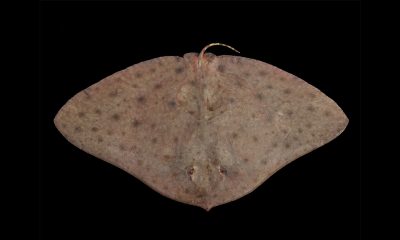Marine Life & Conservation
Study solves deep diving devil rays’ warm brain mystery
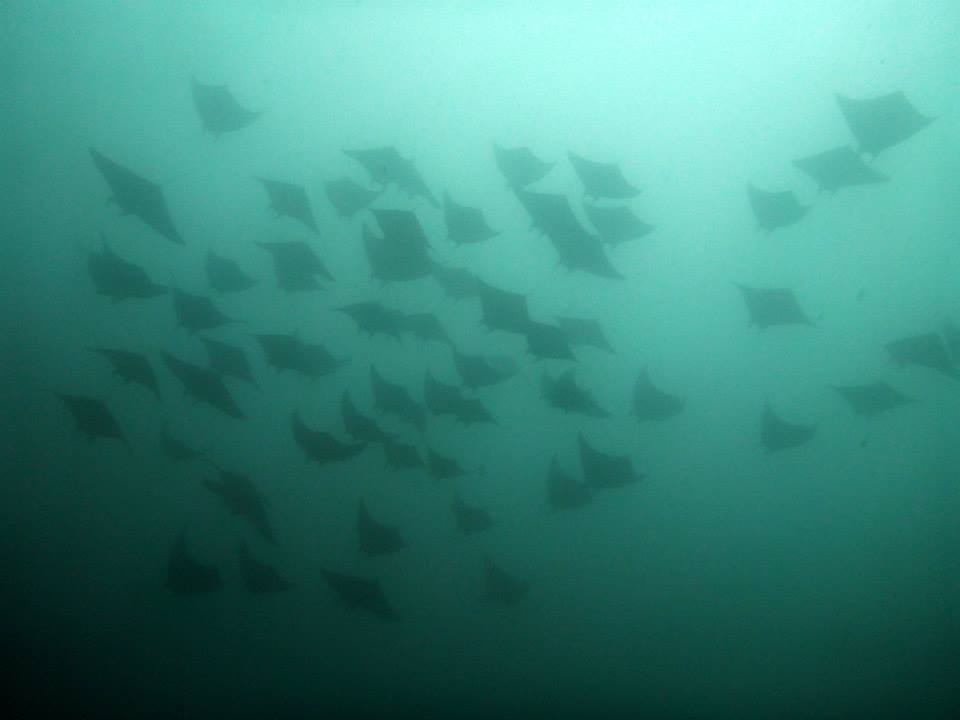
A new study shows that devil rays dive nearly 2km below the ocean surface, making some of the deepest and fastest dives ever observed in the sea.
Scientists tracked 15 of the large, winged fish, previously thought to be surface dwellers, for several months.
In between their icy dives, they appear to bask near the surface to warm up.
The findings from the study offer an explanation for a mysterious mass of blood vessels, thought to keep the ray’s brain warm.
The front part of the animal’s skull is stuffed with a sponge-like mesh of large and small arteries. This network, called a rete mirabile, was discovered in the devil rays 30 years ago.
“It was a mystery as to why they had this system, which is a way of keeping brain activity high, even in a cold environment,” said Dr Simon Thorrold, an ocean ecologist at the Woods Hole Oceanographic Institution and the new paper’s lead author.
The scientists who discovered the rete mirabile in devil rays were so baffled by its presence in a warm-water species that they even suggested it might be working in the opposite direction from usual, helping cool the brain while the rays basked in the sun.
Dr Thorrold’s results appear to have solved that mystery. “We looked at the data and of course, it made complete sense.”
He believes the rays are feeding at the bottom of their remarkable dives, using a well-heated, active brain to forage for small fish that abound in deeper layers of the ocean.
To reveal the ray’s secret submarine lifestyle, Dr Thorrold and his colleagues tagged 15 Chilean devil rays (Mobula tarapacana) using special tags tethered to darts.
“We actually jump in the water and tag them ourselves,” he said. “We take a polespear, we swim down and deploy the tag. The animal’s not restrained in any way.”
The researchers don’t suffer either. “It’s pretty good work, right? Free-diving in the Azores.”
This autonomous Portuguese archipelago happens to be one of the best places to find these particular devil rays, since they congregate there in the summer, around the top of underwater mountains.
But then, in the autumn, they disappear. “We had no idea where they were going,” said Dr Thorrold. “We had an idea that they were moving a long way, perhaps several thousand kilometres.”
That was where the tags came in. These programmable gadgets recorded depth, light, temperature and position data for up to five months, before detaching themselves and bobbing to the surface, where they beamed their data back to the researchers via satellite.
Perhaps unsurprisingly, the rays all headed south, with several being tracked almost as far as the equator.
This was the first time devil ray migration had been recorded and the distances were as much as 3,800km. But it was the other measurements that got the team excited.
“The first thing I looked at was the temperature data,” said Dr Thorrold, “and I saw temperatures of about 4C – and this is an animal that’s supposed to be living in the tropics! I suspected there was probably a mistake.”
The depth data confirmed, however, that the freezing temperatures were a result of incredibly deep dives, typically lasting 60-90 minutes and reaching 1,848m beneath the waves.
Very few fish, among them whale sharks, have been shown to dive this deep, and the all-time record (2,992m) is currently held by a mammal: the beaked whale.
During the day (but not at night), the devil rays tend to loiter within 2m of the water surface for periods before and after their deepest expeditions. This suggests they are using the sun’s warmth to prepare and recover.
One ray plunged below 1,400m on six consecutive days – behaviour that places these devil rays “right at the limit” of known diving behaviour, according to Dr Thorrold.
What is more, they were fast. The rays swam downward at up to 22km/h (13mph), which is much faster than sharks and whales typically descend.
That speed is another surprise. Because the rays are negatively buoyant, they could simply allow themselves to sink, gliding with little effort to their deep-sea feast.
“Our rays are swimming basically as hard as they can, straight down,” said Dr Thorrold. He believes this is another strategy for keeping warm.
Heat generated by their muscles could be stored and used by the specialised brain blood supply, to keep brain function high in the icy depths.
Dr Thorrold says the new findings highlight how little is known about these deeper ecosystems.
“We’re hoping that the rays are going to lead us to some really interesting biology, at depth, that we wouldn’t necessarily have been able to find ourselves – but we can use the rays to lead us to the biologically interesting layers and zones within those depths,” he said.
“These rays, in effect, connect the surface, epipelagic layers in the ocean, with the mysterious deep.”
Source: bbc.co.uk/news
Marine Life & Conservation
Shark Trust Launches New Podcast

 The Shark Trust has launched their new podcast. Delve behind the scenes and gain exclusive insights in the world of shark and ray conservation on The Shark Trust Podcast. Out Now!
The Shark Trust has launched their new podcast. Delve behind the scenes and gain exclusive insights in the world of shark and ray conservation on The Shark Trust Podcast. Out Now!
Join the Shark Trust on this journey as they explore the diverse world of sharks. Hear from experts from different backgrounds and learn how you can become a part of the global effort to protect these vital species.
Whether you’re a seasoned shark expert or just dipping your toes beneath the surface, this podcast offers something for everyone!
In the first series you will hear from the Shark Trust team. Shark Trust Patrons, Monty Halls, Miranda Krestovnikoff and Simon Rogerson. Divers with a passion for sharks. And some of the Oceanic 31 artists.
New episodes released every two weeks on all major podcast platforms and watch full video versions on the Shark Trust YouTube Channel. Keep your eyes peeled for the bonus minisodes!
There are two available to dive into right now!
Episode 1: Dive beneath the waves of shark and ray conservation with Mark as he speaks with Paul Cox, CEO of the Shark Trust. Paul and Mark discuss the threats and difficulties that sharks and rays currently face in the modern world. And how the Shark Trust is working to create a better future for them!
Bonus Minisode: Join Mark at Go Diving, the UK’s biggest dive show. He interviews Shark Trust Patron, Simon Rogerson, about his diving experiences and how seeing sharks can transform your life!
For more information about the work of the Shark Trust, visit their website here.
Marine Life & Conservation
Experience the Greatest Shoal on Earth followed by few nights with Sharks next month at some really great rates with Seas4Life (Watch Video)
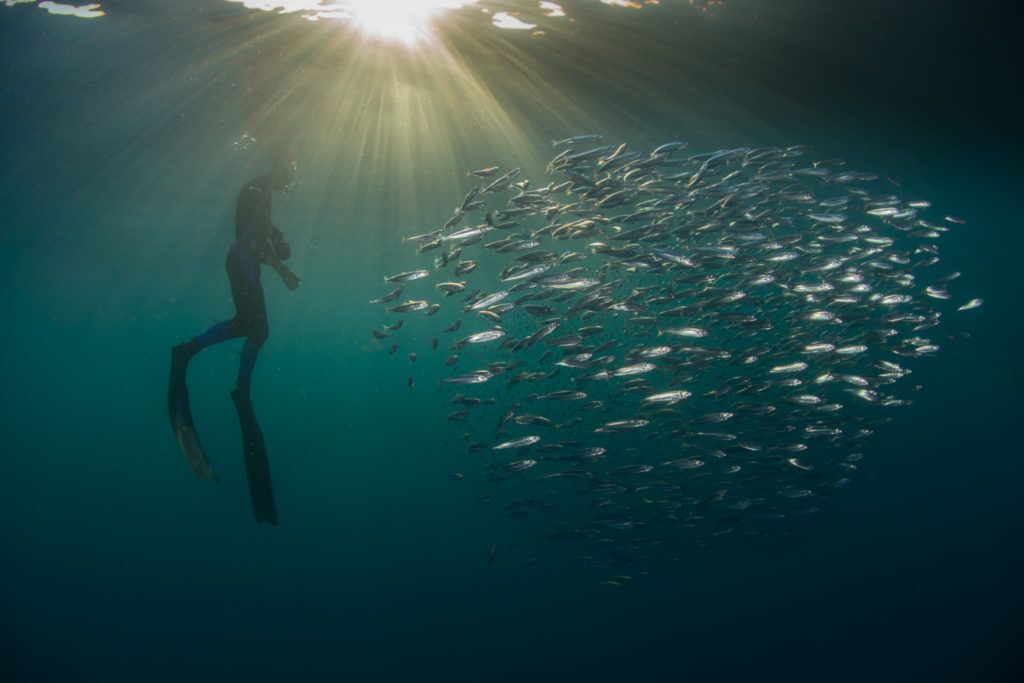
An Exclusive, Expert Led, One-Off experience…
For just a few short weeks each year – end of May through to end of June – the mighty Sardine Run showcases the epic efforts of supreme marine predators working in unison to feed off the migrating sardines in a most dynamic flurry of action. End of June early July is also when the shark season begins – just imagine it is a David Attenbourgh Blue Planet experience.
In case this natural wonder wasn’t exciting enough – majestic humpback whales just happen to start their annual migration back up north adding to this phenomenal experience.
Its a must for the adventurous soul.. Lots of love, laughter, and smiles.
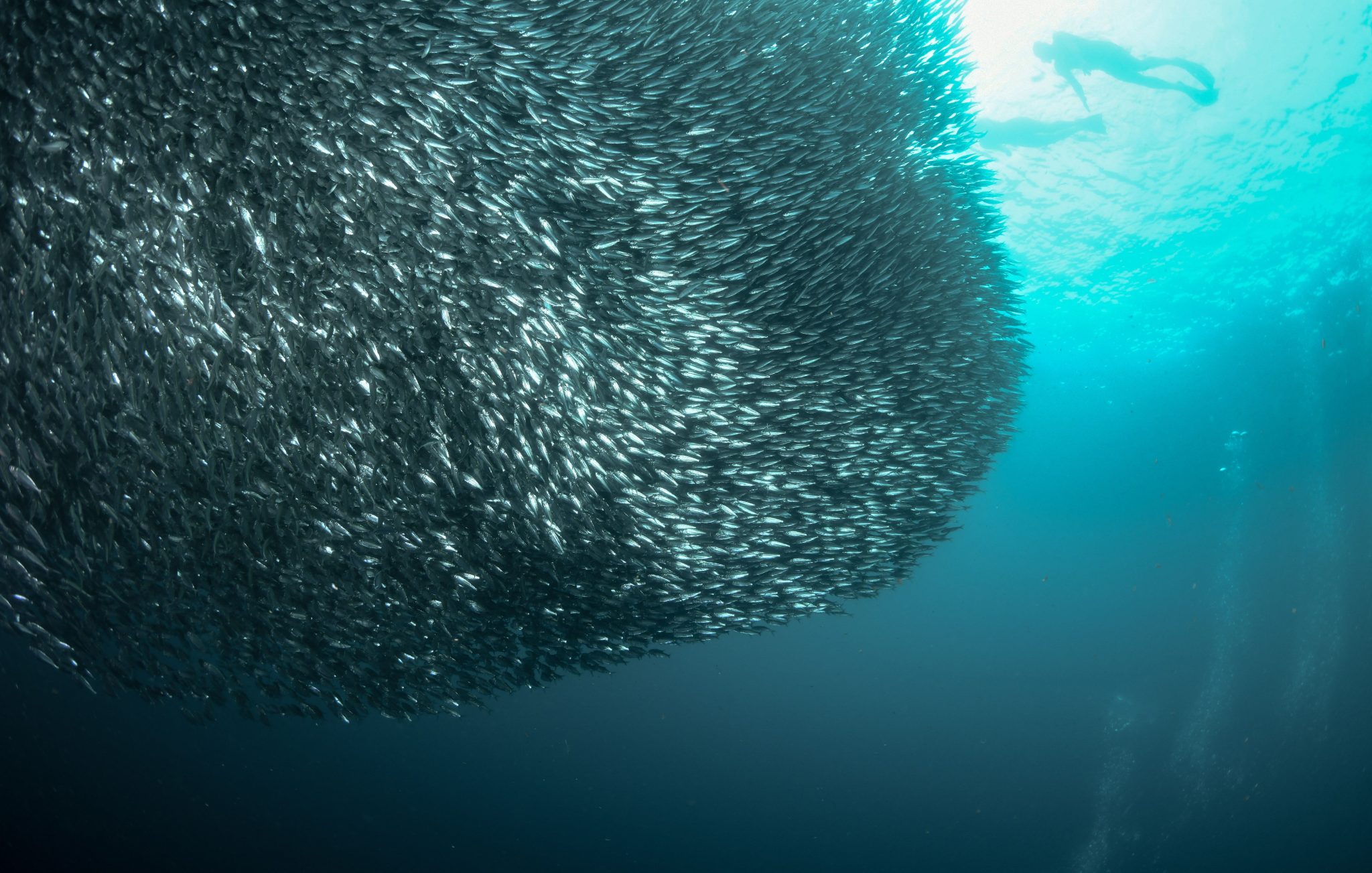
This is a feeding event of unmatched proportions. Thousands of common dolphin charge after the shoals, separating them into bait balls, with their ‘dolphin bubble technique’, bring them to the surface. Watched from the air by the cape gannets, who then launch a massive aerial assault on the sardines. They are also easy pickings for shivers of bronze whaler, dusky and black tip sharks, seals and lastly the huge mouths of Brydes (Brooders) whale that can consume an entire bait ball in one single lunge!
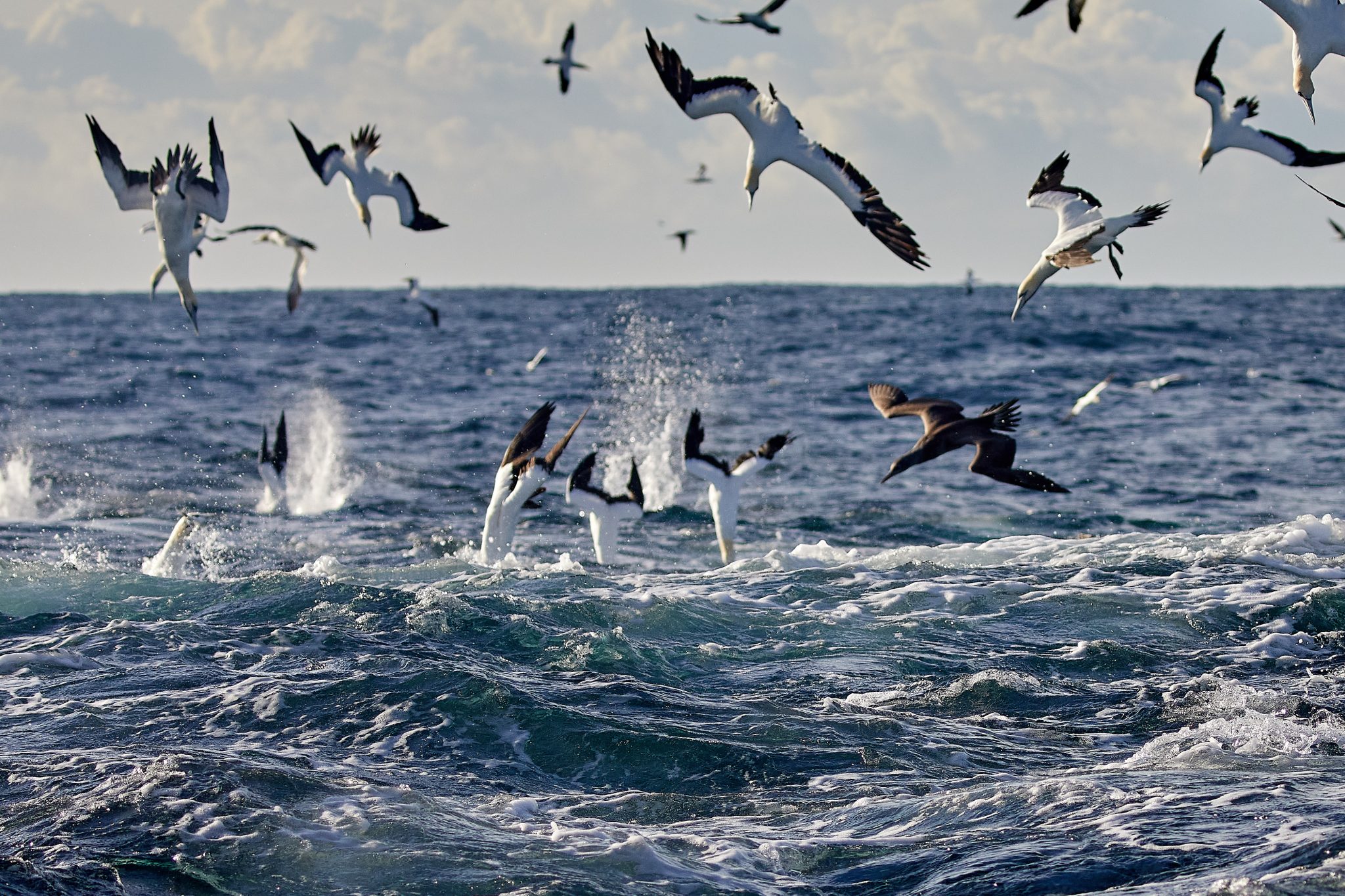
Seas4Life is offering an incredible deal for this year’s Sardine Run. Here are the details:
Date: June 23rd – July 2nd 2024
Type: Family, group, couples, solo travellers. Min of 4 pax – max 8 pax
Location: South Africa
Nights: 9 nights/10 days
Rates originally started at USD$9,705 per person 9 Nights PP, based on 5 pax on the trip. However, you can now experience the Greatest Shoal on Earth followed by some seriously unforgettable shark action for just USD$7,100 per person.
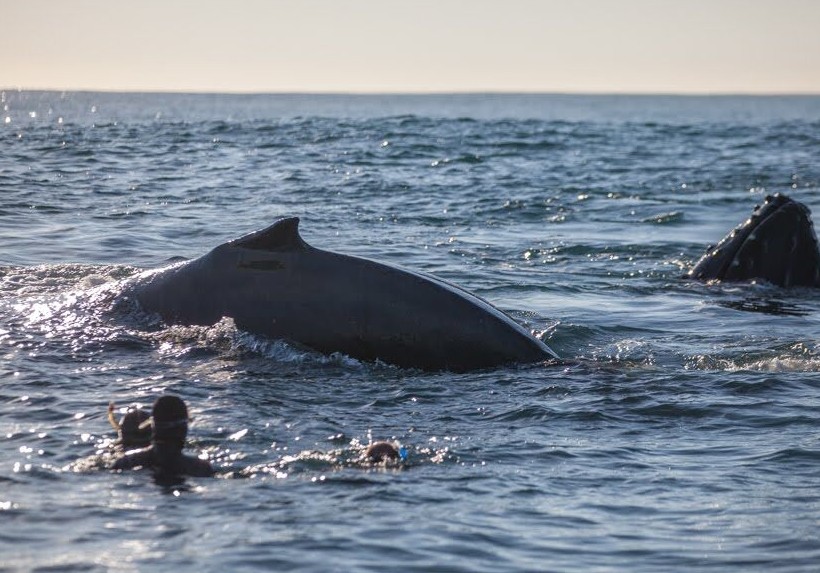
Includes:
- 5 night stay at Gulu Game Reserve (23rd – 28th June)
- 4 night stay at Africa Oceans Manor (28th June– 2nd July)
- 9 nights fully catered stay with breakfast, packed lunch and dinner
- Welcome drinks and selected alcohol (local beers, wines and spirits)
- 4 Sardine Run Days and 3 full Shark Research Days – 1 morning being with Great White
sharks - Guiding by expert marine conservationists, shark specialists and ocean enthusiasts
- Transfers to and from the airports and to and from the launch base and hotels; and on 28th June from Gulu Game Reserve to African Oceans Manor along the Southern African Coastline and parts of the Garden Route
- Privately chartered 26 foot (8m) semi-rigid dive boat (South African Maritime Safety Authority, licensed to travel up to 40 Nautical miles offshore) with two 140hp motors
- Snorkelling and scuba diving gear
- All activities as outlined in the itinerary
- Use of Gulu Private Resort and African Oceans Manor facilities including rejuvenating in their spa, use of the pool, playing tennis, hiking or fishing… (these will be charged separately if used)
- Marine conservation contribution to the shark research unit
- Offsetting your carbon through Planet Moja
- AMREF
- Lead shark scientist Nico, sardine run expertise of ScubaXursions
- Julie as lead guide
- Lots of smiles, laughter and many memories made
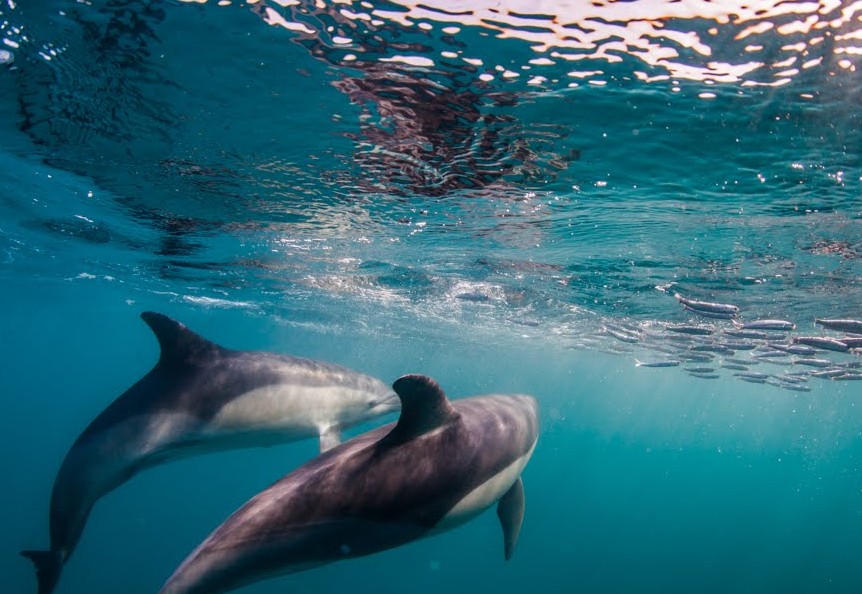
Excludes:
- International flights
- Visas and taxes (airport, government and tourist)
- Scuba diving, free diving and underwater photography courses
- Alcoholic drinks (unless stated) champagne, luxury spirits and selected wines
- Activities not outlined above
- All photographic gear
- DAN Insurance, Scuba and/or photographic gear insurance
- All additional park and/or conservancy fees if applicable
- Travel and health insurance
- Items of a personal nature
- Gratuities
For more information or to book, contact Seas4Life now:
info@seas4life.com / +254 723 639 640 / seas4life.com
-

 Blogs1 month ago
Blogs1 month agoDive Indonesia Part 3: Dive into Lembeh Trip Report
-

 Gear Reviews1 month ago
Gear Reviews1 month agoGEAR REVIEW – Revolutionising Diving Comfort: The Sharkskin T2 Chillproof Suit
-

 News3 months ago
News3 months agoPADI Teams Up with Wellness Brand Neuro to Drive Ocean Change and Create a Blue State of Mind
-

 Blogs3 months ago
Blogs3 months agoMurex Resorts: Passport to Paradise!
-

 Blogs2 months ago
Blogs2 months agoSeagrass Awareness Month brings critical food source for Manatees to centre stage
-

 Marine Life & Conservation3 months ago
Marine Life & Conservation3 months agoSave the Manatee Club launches brand new webcams at Silver Springs State Park, Florida
-

 Blogs2 months ago
Blogs2 months agoSOMABAY: Scubaverse interviews Wolfgang Clausen, General Manager, ORCA Dive Clubs
-
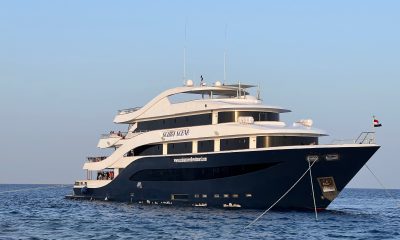
 News3 months ago
News3 months agoDIVE SHOW SPECIAL: Save up to 40% off your next liveaboard with Oyster Diving Holidays









